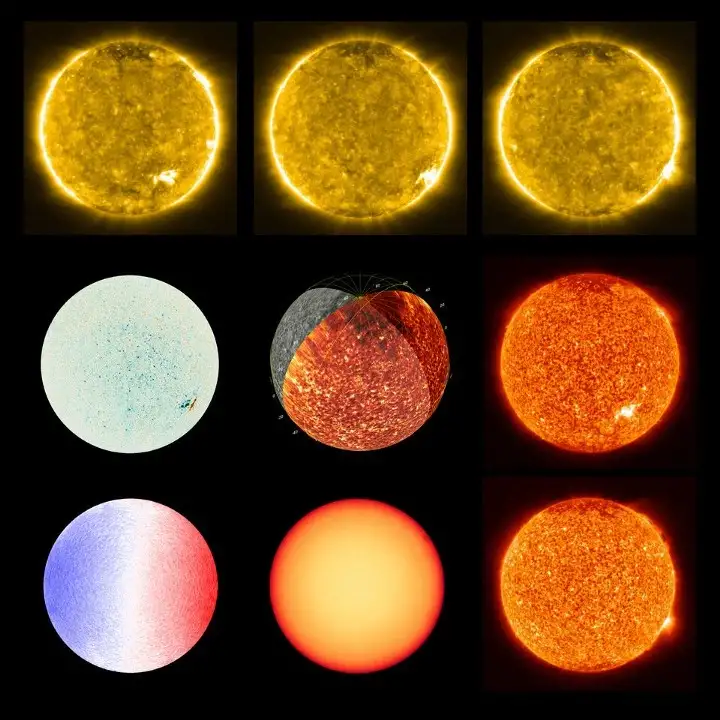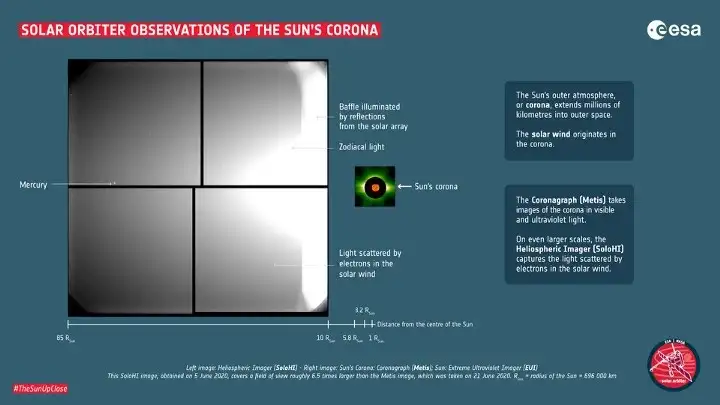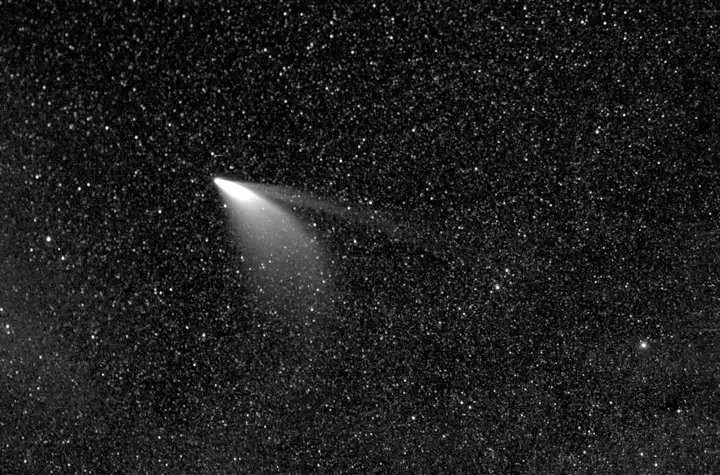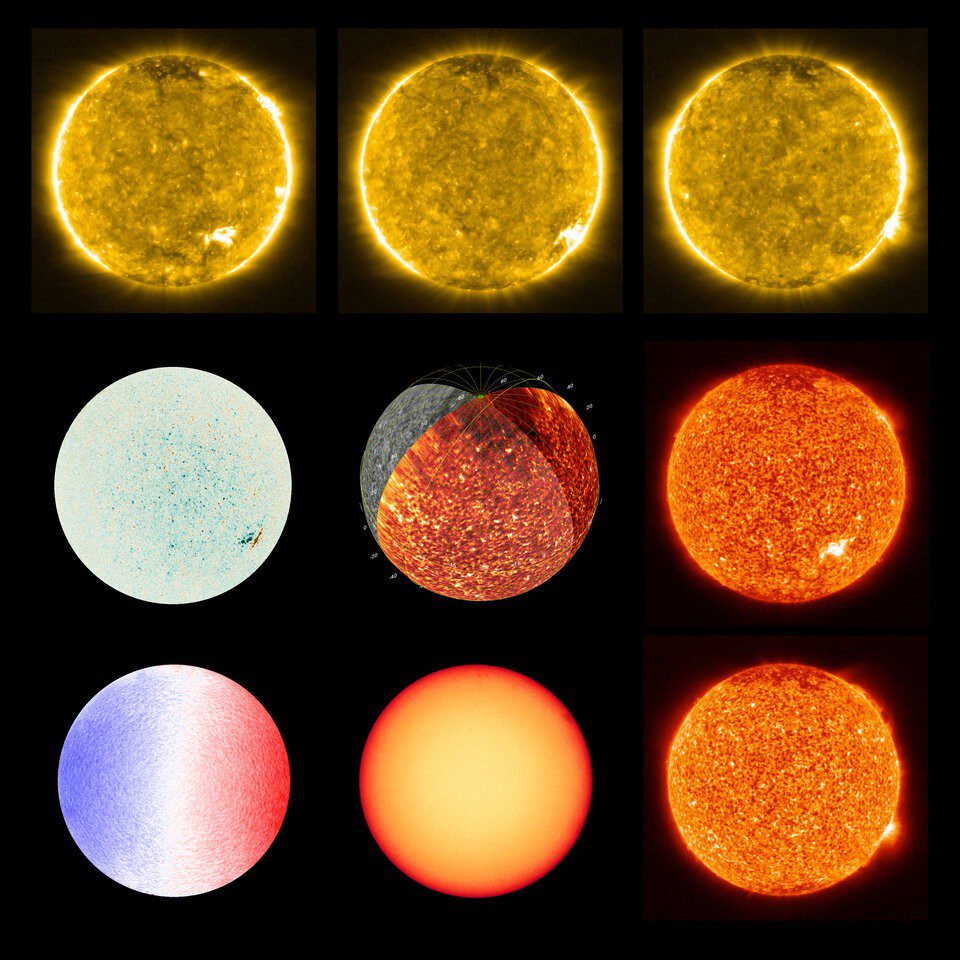
Image courtesy of the European Space Agency
Imagine watching the launch of a NASA planetary mission and knowing that technology you built is along for the ride. It must be thrilling, and SRI’s Jim Janesick knows the feeling well.
Janesick, senior principal research scientist at SRI’s Advanced Imaging lab, has been with the institute for 20 years and before that was at NASA’s famed Jet Propulsion Laboratory (JPL) for 22. He is a leading expert in both charge-coupled device (CCD) and complementary metal-oxide semiconductor (CMOS) imaging technologies that have been used in a multitude of space born imaging missions.
One might say that the spark for Janesick’s long journey to SRI’s space missions began in 1973, when he used a home built 100 x 100-pixel CCD camera and telescope to take what is widely accepted as the first astronomical solid-state CCD image. Janesick jokingly describes himself as a “knuckle-dragging engineer”, but the reality is that he was instrumental in the advent of CCD technology at JPL, which was later modernized into CMOS technology actively developed and pursued at SRI.
Janesick is the designer of SRI’s CMOS spaceborne imagers onboard the European Space Agency’s (ESA) Solar Orbiter launched in 2020, and NASA’s Parker Solar Probe launched in 2018, missions that orbit the sun to study solar physics. Janesick notes that “after many years of advanced development, SRI’s CMOS imagers were awarded a TRL6 rating,” referring to the Technology Readiness Level (TRL) scale of 1 to 9 that NASA uses. “Once the team was at TRL6 along with successful ground-based prototype demonstrations, NASA gave the green light to use SRI’s CMOS imager in an instrument called the Solar and Heliospheric Imager, or SoloHI. This automatically gave the same rating to the Wide-Field Imager for Parker Solar Probe (WISPR) instrument since both missions use the same CMOS imager.”
Janesick explains that CCD technology is commonly used in astronomy and planetary missions, but that CCD technology can only withstand a small amount of damaging radiation. “CCDs need to be heavily shielded, but this adds weight to the overall application, which is not acceptable for some space missions,” he explains. “This is especially the case for solar orbiting, as radiation levels are too high for CCD use. NASA and ESA selected SRI’s imager because they were designed and fabricated to withstand the sun’s harsh radiation environment over several years at close range. As such, the spacecrafts are capable of capturing the closest images of the sun.

Image courtesy of the European Space Agency
“Also, CMOS is advantageous because supporting electronics can be placed on the same chip as the imager,” Janesick describes, as compared to CCDs. “We had the technology, the silicon foundry, and the customers.” The result is a phenomenal feat of technology with radiation-hardened components that weigh far less and use far less power compared to CCD cameras. With the addition of radiation and dust-hardened lenses made of BK7 space telescope glass and special light reflectors, the WISPR and SoloHi are able to produce images of the Sun that could never before be possible.
On June 9, 2020, NASA’s Parker Solar Probe completed a successful first close pass of the Sun, just 11.6 million miles from the Sun’s surface. Traveling at nearly 245,000 miles per hour, Parker is the fastest human-made object. During its seven-year mission, the Parker Solar Probe is scheduled to make more than 20 additional solar orbits. On its last approach, the spacecraft will be a mere four million miles from the Sun’s surface. Janesick ponders the distinct possibility that Parker will live on much longer than seven years, just as its predecessors like Cassini’s Saturn probe and others did.

Processed data from the WISPR instrument on NASA’s Parker Solar Probe shows greater detail in the twin tails of comet NEOWISE. // Credit: NASA/Johns Hopkins APL/Naval Research Lab/Parker Solar Probe/Guillermo Stenborg
As the Parker Probe and Solar Orbiter proceeds with its missions, Janesick continues his as well. These days, he is most excited about two upcoming SRI missions; the Europa Clipper spacecraft, scheduled for a 2024 launch and the Geostationary Operational Environmental Satellite (GOES)-U also scheduled for 2024. GOES will fly a solar instrument called Compact Coronagraph (CCOR) and the Europa Clipper will fly a Jupiter-oriented instrument named Europa Imaging System (EIS). GOES will use the same CMOS imager as the SoloHi imager. The Europa spacecraft will have the first large-scale flight approved CMOS imager ever flown (2k x 4k pixels). “We do an extensive testing and selection process in finding several perfect flight candidates, and we’re at that stage now for Europa,” Janesick states.
Janesick explains that the ultimate scientific feat is to go to a planet or an accompanied moon where we may have a better chance at finding life. That may be Jupiter’s moon, Europa, because scientific consensus says that this moon may have a 50-mile-deep ocean covered by a multi-mile layer of ice. “The surface has cracks and fissures where water reaches the surface. We believe our life here on Earth started deep in the ocean near warm volcanic activity, so if the environment on Europa is the same, then maybe it has life.”
From Europa and beyond, who knows what future CMOS imagers will capture and demystify? CMOS image technology may even help answer the most profound scientific question of whether there is life on other planets. It is the question that scientists — and even some “knuckle-dragging engineers” — would love an answer to.
Resources:
1. Cassini’s Nuclear Heart. https://www.energy.gov/articles/nuclear-heart-cassini
2. SoloHi Mission: https://www.nrl.navy.mil/ssd/branches/7630/SoloHI
3. https://blogs.nasa.gov/parkersolarprobe/
4. https://www.nrl.navy.mil/ssd/branches/7630/SoloHI
5.https://www.nasa.gov/directorates/heo/scan/engineering/technology/txt_accordion1.html
6. https://www.thomasnet.com/articles/instruments-controls/systems-burn-in/
7. https://www.researchgate.net/scientific-contributions/2106088882_James_Janesick




